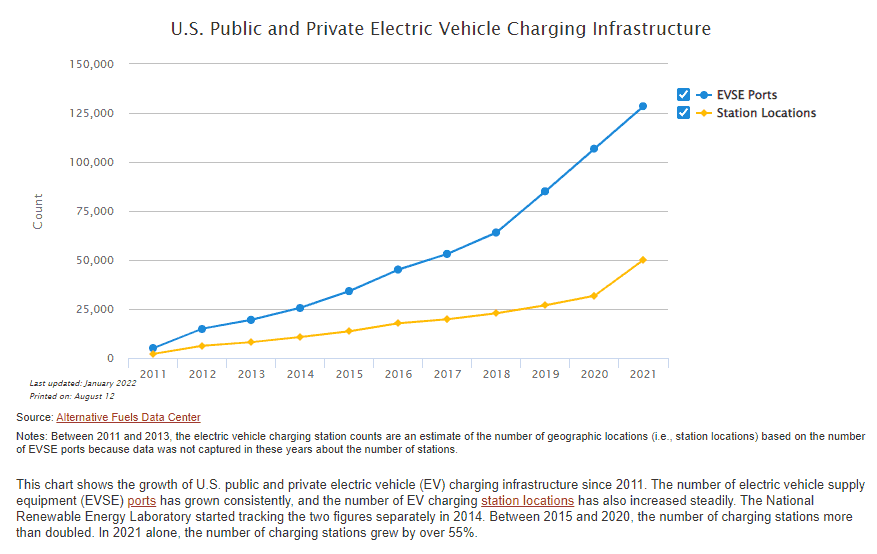In an era of rapid battery and charging development, electric vehicles (EVs) are finally becoming competitive with gas-powered cars. In recent years, the industry has seen a significant uptick in interest from consumers and manufacturers alike.
Not only is the experience of an EV better than a gas-powered car; the math also favors EVs.
The economics are compelling for fleet managers or drivers who log high mileage on a regular basis, especially when gas prices rise.
Let’s take a look at some of the key math metrics that make EVs worth considering for your next vehicle purchase.
Credit Checks
Even before EVs are more affordable, they are more financially accessible because they can be leased using criminal background checks versus credit checks.
Traditionally sellers have relied on credit checks to ensure that they are not taking on too much risk, limiting access to financing to a calculated debt to equity ratio. Additionally, unresolved errors or failures on a credit check can lead to less favorable terms—or even being denied a car altogether.
In this time when we need to encourage investment and EV adoption, credit checks work to limit investment appetites and abilities. Credit checks can be helpful in some cases, but they can also artificially limit business growth by aligning lending limits to the median values of the average consumer.
Criminal checks are more appropriate than credit checks for an industry we need to grow. Criminal history and arrest records can be used to minimize potential risks, but a larger latitude is needed to empower qualified investors to buy.

By eliminating credit checks, fleet businesses looking to invest early in EVs can do so based on their own economics and business plan. This is how companies like Island Rides were able to double their fleet in a matter of months once they realized demand far exceeded their stable of cars.
When purchasing an EV through Spring Free EV, fleet managers follow a basic background check, no credit checks required.
Maintenance
The maintenance costs for EVs are lower than for traditional cars. The average cost of maintaining an EV is $949 per year, $330 less than a gas-powered vehicle.
EV maintenance is simpler than it is for traditional combustion engines. The electric motor does not produce violent explosions and dirty emissions. This means less wear and tear on the vehicle’s parts.
It also means the electric motor has a much longer lifespan than a combustion engine. It has fewer moving parts, so it needs less servicing over its lifetime.
This is the foundation of why Spring Free EV can cap excess mileage fees, and why it is attractive to offer them as leases. Additional years of operation for an investment also increases its earning potential.
Fuel
EVs are more economical in terms of energy efficiency, which means that they use less electricity over time, which makes them cheaper to run.
EVs convert over 77% of the electrical energy from the grid to power at the wheels, while conventional gasoline vehicles only convert about 12–30% according to the US Department of Energy. This makes EVs a sound choice for energy efficiency.
However, buyers are usually more concerned with costs. There is good news there too. A study by the University of Michigan Transportation Research Institute found that EVs are more cost-effective than gasoline-powered cars, with the price per mile of driving an EV falling 3-6 times lower than the cost of driving a gasoline car.
Furthermore, fuel is cheaper for electric cars. With average gas prices over $4 a gallon, and electricity hovering around $0.10 kWh, the average cost per mile for EVs is about $0.19, while gas vehicles are approximately 50% more expensive landing around $0.28 per mile.

Source: US Dept of Energy, July 2022
The Charging Dilemma
The biggest problem with EVs is the need to charge them. And the biggest problem with charging them is the need for a charging station.
While there are still fewer charging stations than gas stations in the US, they are growing rapidly. In 2021 alone, the number of charging stations grew by 55%. This combined with the $7.5 billion the US government approved to eliminate charging deserts across the US means that finding a charge is not nearly as challenging anymore.

Source: Alternative Fuels Data Center
The reality is that most electric cars do not charge often at these far off stations. While they are necessary for long hauls, in practice it isn’t as much of an issue. EVs are typically charged at your natural destination using a regular outlet, while the car is normally parked. EV owners find they go to public fuel stations far less than gas powered vehicle drivers do. Plus, EVs end up fully charged each morning, which means EVs offer less interruption for refueling while driving.
Mileage
Range has traditionally been a sticking point for most people considering purchasing an EV. A few years ago, EVs could not make the 95 mile trip from Philadelphia to New York on a single charge. Today, EVs can easily make the round trip.
According to the US Department of Energy, for the 2021 model year, the median driving range of all-electric vehicles (EV) was 60% of gasoline powered vehicles, with EV coming in at 234 miles and gas engines at 403 miles. Since the average driver travels 39 miles per day, range is also not a daily concern for EV owners.
This is through a new type of lease called the mileage purchase agreement (MPA), which is gaining traction in the EV industry. The MPA idea is simple: EVs need less maintenance, and last longer. Excess mileage does not depreciate the car the same way gas engines do, and they should be priced to accommodate that. This is why MPAs cap charges for excess mileage fees usually around 2800 miles per month. This cap is far more than the average residential driver who travels just 1200 miles per month, but for fleet managers, this is attractive. It can dramatically improve the earning potential for EVs.
Spring Free EV Favors Road Warriors
While EVs are beneficial for the average American driver that travels 12,000 miles per year, EVs are especially beneficial for long-range drivers that travel 30,000-40,000 miles per year, due to better mileage, and lower fuel, maintenance, and insurance costs.
We’re on a mission to make the investment of purchasing an EV more accessible for fleet managers.
At Spring Free EV, we make it faster, easier, and more affordable to get an electric car.

